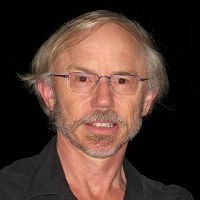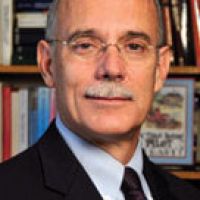Dialynas et al., 2017
A dynamic hydrology-critical zone framework for rainfall-triggered landslide hazard prediction
Dialynas, Yannis G, Efi Foufoula-Georgiou, William E Dietrich, Rafael L Bras (2017)
American Geophysical Union 2017 Fall Meeting, New Orleans, Louisiana, 11-15 December 2017 Cross-CZO
-
Calhoun, Luquillo, INVESTIGATOR
-
IML, INVESTIGATOR
-
Eel, INVESTIGATOR
-
Calhoun, Luquillo, INVESTIGATOR
Abstract
Watershed-scale coupled hydrologic-stability models are still in their early stages, and are characterized by important limitations: (a) either they assume steady-state or quasi-dynamic watershed hydrology, or (b) they simulate landslide occurrence based on a simple one-dimensional stability criterion. Here we develop a three-dimensional landslide prediction framework, based on a coupled hydrologic-slope stability model and incorporation of the influence of deep critical zone processes (i.e., flow through weathered bedrock and exfiltration to the colluvium) for more accurate prediction of the timing, location, and extent of landslides. Specifically, a watershed-scale slope stability model that systematically accounts for the contribution of driving and resisting forces in three-dimensional hillslope segments was coupled with a spatially-explicit and physically-based hydrologic model. The landslide prediction framework considers critical zone processes and structure, and explicitly accounts for the spatial heterogeneity of surface and subsurface properties that control slope stability, including soil and weathered bedrock hydrological and mechanical characteristics, vegetation, and slope morphology. To test performance, the model was applied in landslide-prone sites in the US, the hydrology of which has been extensively studied. Results showed that both rainfall infiltration in the soil and groundwater exfiltration exert a strong control on the timing and magnitude of landslide occurrence. We demonstrate the extent to which three-dimensional slope destabilizing factors, which are modulated by dynamic hydrologic conditions in the soil-bedrock column, control landslide initiation at the watershed scale.
Citation
Dialynas, Yannis G, Efi Foufoula-Georgiou, William E Dietrich, Rafael L Bras (2017): A dynamic hydrology-critical zone framework for rainfall-triggered landslide hazard prediction. American Geophysical Union 2017 Fall Meeting, New Orleans, Louisiana, 11-15 December 2017.
Explore Further




